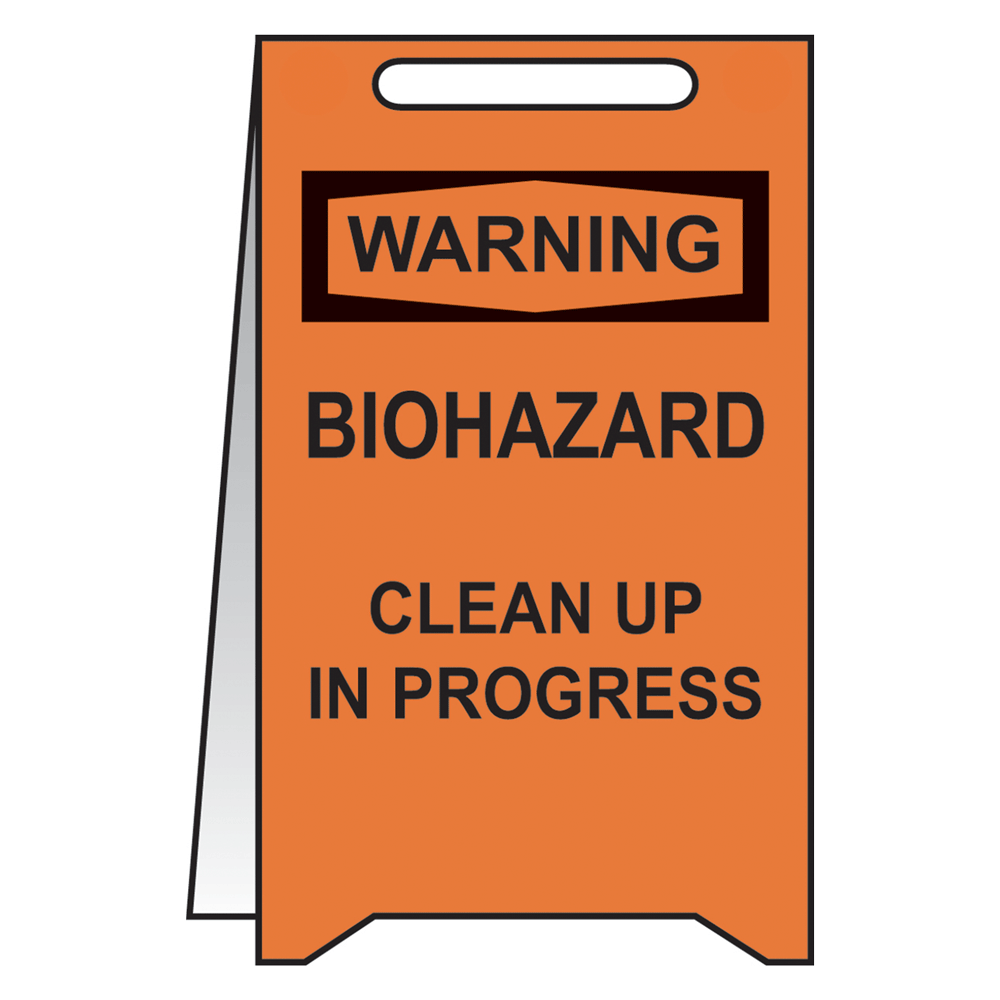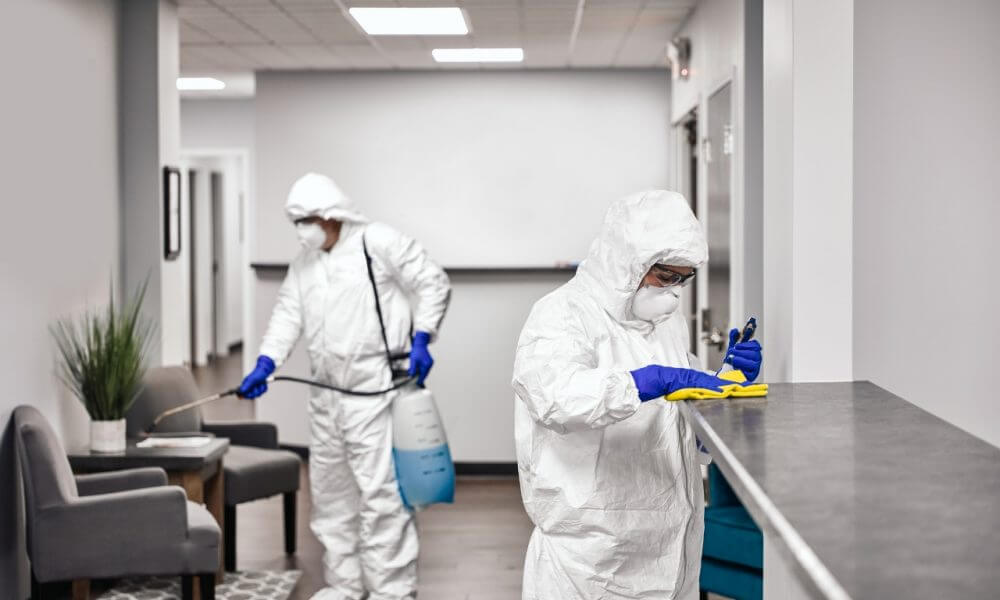Biohazard Removal: Safe Handling and Disposal of Hazardous Materials
Biohazard Removal: Safe Handling and Disposal of Hazardous Materials
Blog Article
Professional Biohazard Cleaning and Purification for Blood, Bodily Fluids, and Hazardous Materials
In the realm of biohazard cleaning and decontamination for blood, bodily fluids, and unsafe products, accuracy and competence are vital. The possible health threats connected with direct exposure to biohazards underscore the critical requirement for precise handling and extensive clean-up. Specialized training outfits specialists with the knowledge and abilities needed to resolve these unsafe scenarios efficiently. Nonetheless, it is not just about cleansing up; the significance of utilizing appropriate purification methods can not be overemphasized. As we navigate the intricate landscape of biohazard cleanup, understanding the subtleties of laws, compliance, and the specialized devices at play becomes essential in guaranteeing a secure and thorough decontamination procedure.
Wellness Risks of Biohazard Exposure
Exposure to biohazards presents considerable health threats that can lead to extreme consequences for people and communities alike. Biohazards include a wide variety of organic materials, including blood, bodily fluids, mold and mildew, germs, infections, and various other possibly transmittable materials. When people enter call with these biohazards, whether via mishaps, incorrect handling, or ecological direct exposure, they encounter the threat of contracting significant ailments or diseases.
One of the key wellness dangers related to biohazard direct exposure is the transmission of infectious conditions. Bloodborne pathogens such as HIV, hepatitis B and C, and numerous germs can be existing in biohazardous materials, presenting a straight hazard to human health. Breathing in air-borne biohazards like mold spores or entering contact with contaminated surfaces can additionally lead to breathing concerns, allergies, and various other negative health and wellness impacts.
In addition, biohazard exposure can have lasting wellness effects, with some conditions manifesting years after the first call (Blood Cleanup). Therefore, it is crucial to prioritize correct biohazard cleaning and purification to minimize these health and wellness dangers and ensure the security of people and areas

Specialized Educating for Biohazard Cleaning
When it comes to dealing with biohazard cleaning effectively and securely, specialized training plays a fundamental function in guaranteeing appropriate decontamination procedures are complied with. Biohazard clean-up calls for particular expertise and skills to properly minimize risks related to bloodborne pathogens, bodily fluids, and hazardous materials. Experts trained in biohazard clean-up go through extensive guideline on how to securely take care of, eliminate, and take care of biohazardous products to avoid contamination and exposure.
Specialized training for biohazard clean-up covers a variety of necessary subjects, including appropriate individual safety devices (PPE) use, bloodborne microorganism understanding, purification techniques, and dangerous waste disposal methods. People learnt biohazard cleanup are equipped with the necessary expertise to evaluate contamination levels, identify prospective risks, and apply suitable cleaning treatments in compliance with governing standards.
Constant training and education and learning are critical in the area of biohazard clean-up to stay updated on the current decontamination innovations, security procedures, and regulations. By purchasing specialized training, biohazard cleaning specialists can successfully respond to emergency cleanup situations and secure both public health and the environment.
Significance of Proper Decontamination Techniques
Making use of appropriate decontamination strategies is important in biohazard clean-up to successfully get rid of harmful materials and reduce health and wellness threats. Reliable purification not only makes certain the removal of noticeable traces of blood, physical fluids, and various other biohazards however likewise targets invisible microorganisms that might position significant wellness risks if not effectively eradicated. By adhering to rigid purification procedures, educated professionals can considerably lower the danger of exposure to hazardous microorganisms, viruses, and microorganisms that could bring about illness or infections.
Proper decontamination methods include using specific tools and anti-bacterials that are particularly designed to counteract biohazards effectively. Comprehensive cleansing and sanitation of contaminated locations are vital to avoid the spread of pathogens find more info and ensure a secure setting for passengers. Furthermore, the appropriate disposal of biohazardous waste complying with decontamination procedures is essential in protecting against contamination of other surface areas or people.

Tools and Devices for Safe Clean-up
When dealing with blood, physical fluids, or hazardous materials, biohazard cleaning specialists rely on specialized equipment to minimize direct exposure threats and completely sanitize the afflicted location. Additionally, biohazard cleaning sets consisting of disinfectants, absorptive materials, and biohazard bags are made use of to securely dispose and contain of contaminated items.
Advanced cleaning devices like hospital-grade anti-bacterials, HEPA-filtered vacuum cleaners, and misting devices are utilized to sterilize surfaces and get rid of biohazards properly. Specialized equipment such as sharps containers and biohazard waste disposal containers are used to securely handle sharp things and biohazardous waste materials. By making use of the right devices and tools, biohazard cleaning specialists can make sure a comprehensive cleanup process that focuses on safety and security and reduces health risks for both workers and residents of the affected room.
Laws and Conformity in Biohazard Cleaning
Appropriate adherence to policies and compliance standards is vital in biohazard cleaning to guarantee the safety of both employees and the environment. Government agencies such as OSHA (Occupational Safety and Health Administration) and the EPA (Epa) have actually developed check out this site particular guidelines for biohazard cleaning treatments to minimize wellness threats and ecological contamination. These laws cover an array of elements consisting of the handling, transport, and disposal of biohazardous products, along with the essential training and safety devices needed for employees associated with the cleaning procedure.
Biohazard cleaning firms have to remain up-to-date with these guidelines to guarantee that their operations meet the required safety and security requirements. Web Site Failing to adhere to these guidelines can result in serious effects, consisting of fines, lawsuit, and threatening the health of people and the setting. By following rigorous guidelines and conformity procedures, biohazard cleaning firms can efficiently mitigate dangers and ensure a safe and complete clean-up process for all parties included.
Verdict
To conclude, biohazard cleansing and decontamination call for customized training, appropriate techniques, and adherence to laws. Exposure to blood, bodily fluids, and dangerous materials presents significant health and wellness risks, making it critical to use the best devices and tools for safe cleanup. By adhering to rigorous procedures and guidelines, experts can properly minimize the risks related to biohazard exposure and make sure the safety of both themselves and others.
As we navigate the intricate landscape of biohazard cleaning, understanding the nuances of guidelines, compliance, and the specific devices at play ends up being necessary in making sure a secure and extensive purification procedure. (Blood Cleanup)
When it comes to handling biohazard cleanup efficiently and securely, specialized training plays a basic function in making certain correct decontamination treatments are adhered to.Utilizing proper purification techniques is essential in biohazard cleanup to properly get rid of dangerous products and reduce wellness risks. Additionally, biohazard cleaning sets containing anti-bacterials, absorptive materials, and biohazard bags are utilized to securely dispose and contain of infected items.
Federal government agencies such as OSHA (Occupational Safety and Health Management) and the EPA (Environmental Security Company) have developed particular standards for biohazard clean-up treatments to decrease wellness risks and environmental contamination.
Report this page